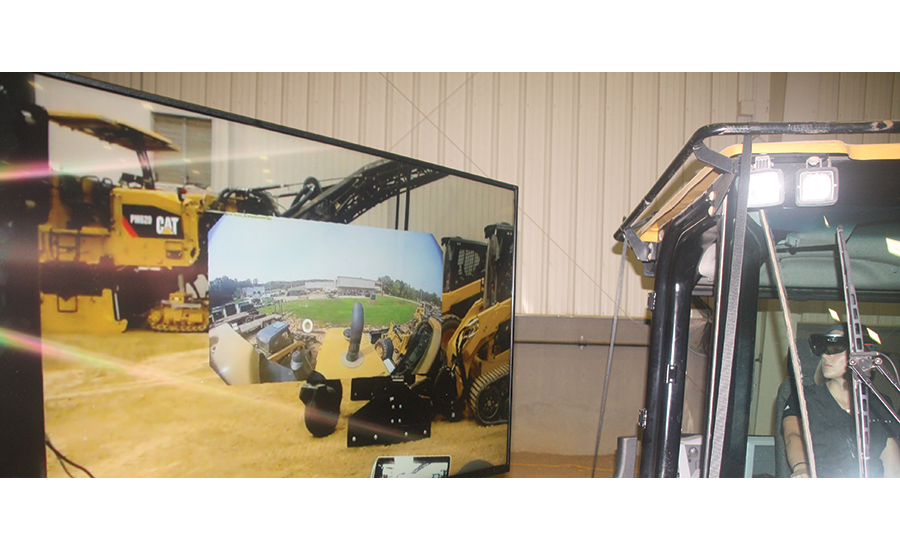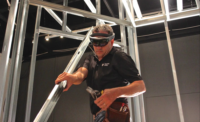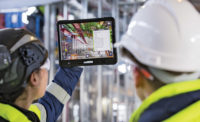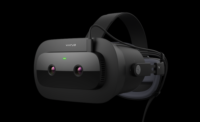Getting into the cab to start a new day on the site usually comes with a checklist. But the inside of the cab may one day be a nearly featureless shell, totally dormant until the operator activates his or her mixed-reality headset and logs into the system.
“The idea behind this is, an operator shows up for work in the morning and checks out a headset. He logs into that headset, and now that headset has all of his preferences, languages, setups and his coaching on what he needs for different tasks,” says Lonny Johnson, director of Caterpillar’s mixed-reality program.
In a prop machine cab set up at Caterpillar’s demonstration center in Edwards, Ill., Johnson walked ENR through the interface. Aside from joysticks and pedals, the cab’s interior is bare, with all the other displays and controls contained in floating holograms along the dash.
The controls are driven by sight. Menu items are highlighted by looking directly at them and activated by a joystick switch. Different configurations can be saved, allowing the user to customize the information they see. Turn to the right, and the view from the backup camera is shown as a solid hologram floating just outside the cab.
Johnson emphasizes that this is only a demonstration, and the HoloLens currently is not considered rugged or safe enough to wear in the cab. “HoloLens is not an industrialized product today,” he says, adding that a mixed-reality demonstration cab was the goal for this year. In 2017, his team will build a mixed-reality interface into an actual Cat machine. “We have relationships with all of those hardware manufacturers, the ones who are producing industrial hardware that meets our requirements, and we’re working hard with them to make something that we can put into production in the future.”






Post a comment to this article
Report Abusive Comment